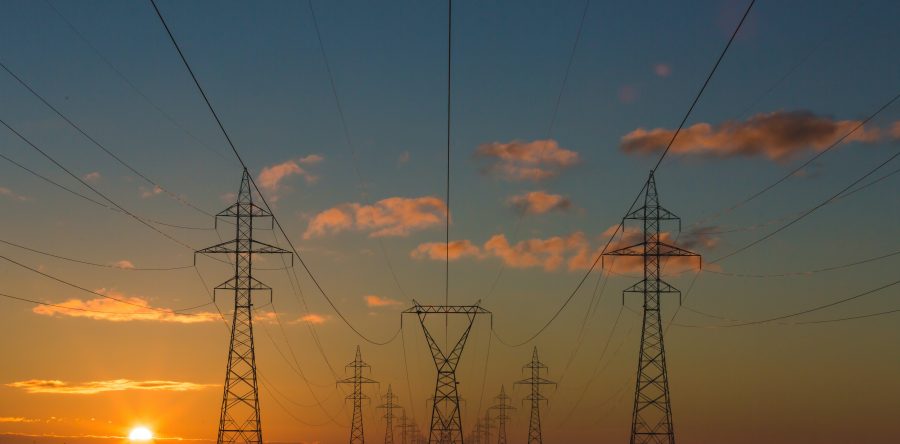The COVID crisis is further fueling a climate emergency according to the United Nations Secretary General because G20 nations are spending considerably more stimulus funding on fossil energy than low-carbon projects.
The disconnect between political ambition and reality in the climate fight is not new, but the inability to get green in this crisis does not bode well for the success of the new round of national decarbonization pledges that were announced on the 5th anniversary of the Paris Agreement at the virtual Climate Ambition Summit.
Political posturing aside, the reality is that the decarbonization task is colossal and promises to be massively disruptive to a global population already pushed well beyond its comfort zone by COVID.
The scale of the challenge in achieving net-zero carbon emissions by 2050, just in the U.S., is detailed in a new Princeton University analysis. It determines that there are “technologically and economically plausible energy-system pathways” for the U.S. to meet this ambitious goal.
However, it requires “at least $2.5 trillion in additional capital investment” from government and the private sector over the next decade. The major investment decisions would need to begin immediately and ramp up through a decade-long clean energy transition.
This seems like a tough political lift in an environment where the U.S. Congress can barely agree on a sub-trillion dollar package to buttress the COVID-cratered economy.
It also anticipates the achievement of “social license” from a broad range of American citizens for the massive expansion of renewable energy, transmission lines, electric vehicles, and electric home heating. This at a time when the country is in transition, after the 2020 election, from a period of intense partisan tribalism to hostile “political sectarianism.”
One tripwire for pushback to this energy revolution is that the exponential expansion of renewable energy possibly will require unsustainable amounts of territory, both onshore and offshore. This, potentially, is a more significant challenge for renewables than their intermittency and energy storage limitations.
One of the eight key priorities of the academic study that potentially can generate broad political and social support is the creation of “real options” for energy technology innovation. This includes hydrogen production as well as “clean, firm electricity resources” like natural gas with carbon capture, biopower plants, and advanced nuclear power. These technologies can support renewables and assist in mitigating their challenges.
At a recent Global Nexus Initiative webinar, there was consensus among experts from the U.S., Canada, and the U.K. that the politics of nuclear energy have significantly changed for the better over the past 5 years and that the support largely was driven by climate concerns.
All three countries have identified nuclear power as an essential component of their zero-carbon objectives and one that can enhance the value of renewable energy sources.
A new U.K. energy white paper noted that rising global temperatures are “an existential threat to the planet” and proceeded to flesh out the country’s Ten Point Plan for a Green Industrial Revolution. Among those key elements is the role of large-scale nuclear power, small modular reactors (SMRs), and advanced modular reactors (AMRs). This includes the goal of bringing “at least one large-scale nuclear project to the point of final investment decision” in the next few years and the creation of a roughly $500 million Advanced Nuclear Fund to support innovation.
Canada recently released its climate plan which includes almost $400 million for “clean energy technologies in the electricity sector” including investment in SMRs. In the near future, the Canadian government will launch its SMR Action Plan that identifies the next steps needed to “develop and deploy this technology”. The provinces of New Brunswick, Ontario, Alberta, and Saskatchewan are supportive of this SMR work.
In the U.S., existing and future nuclear energy has emerged as a rare issue of bipartisan agreement. As the Congress struggles to complete its end-of-year government funding bill, there is the possibility that it may include comprehensive energy legislation. This would include authorization for $6 billion in nuclear energy R&D over the next 5 years as well as funds that will allow the siloed offices at the Department of Energy (DoE) to work together toward an integrated clean energy approach.
The U.N. Secretary General is not wrong to ring the alarm about the hollow promises to reign in global temperatures. The challenge is real, and it needs to be kept at the top of the global priority list. But the reason so many clean energy pledges go unfulfilled is because the transition that is required is wrenching and politically fraught. It is very uncertain whether a COVID-sapped and increasingly sectarian population will accept the significant new sacrifices required to support a highly disruptive clean energy transition.
Perhaps surprisingly, given its history, nuclear power is a clean energy technology that now has support on both sides of the political aisle in America and among its key allies. It can strengthen the value of renewable energy while reducing its need for an expansive footprint. It also can produce hydrogen, an important carbon-free fuel of the future. That is a climate-benefit combination that may be politically actionable and difficult to beat.
Ken Luongo, President, Partnership for Global Security


